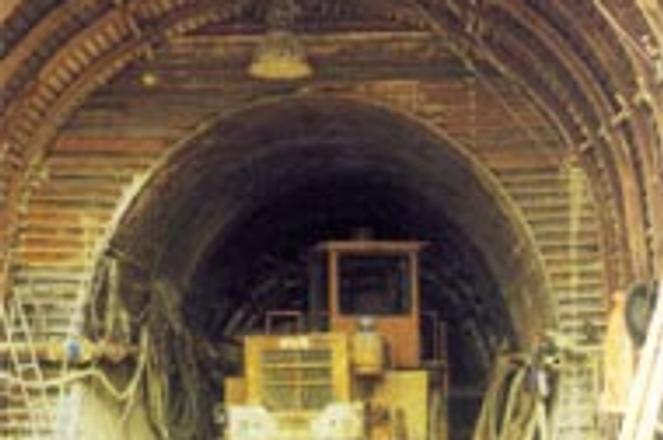Branisko tunnel will replace one of Slovakia's most treacherous stretches of highway.Couresy of Váhostav
A planned new highway will connect Slovakia's two largest cities, the state capital Bratislava and the eastern Slovak city of Košice. The existing route takes its share of twists and turns through the country's jagged landscape, but the stretch that lies beyond the scenic Spiššký Hrad (Spiš castle) is infamously dangerous. A small ridge at Branisko rises like a wall, causing the road to climb sharply up a notorious high pass called "Chvalabohu" (Thank God).
Travellers will no longer have to pray to God after Slovakia's first motorway tunnel is dug through the ridge. The tunnel project is scheduled to be completed in 2001 and will be five kilometers long. Tunnel construction in Slovakia, dormant for over 50 years, has entered a new era.
The project is already underway with funding supplied by Slovenská Správa Ciest (Slovak Road Administration - SSC), and is expected to cost 2.4 billion Sk ($68.5 million). A collection of Slovak companies, together with Austrian and German expert consultants, started on the tunnel in August, 1996.
Geological data about the ridge was nonexistent until a mini-tunnel was dug to anticipate future construction hazards. "The results were more satisfactory than we expected", said Jozef Frankovský, assistant to the general director of Banské Stavby Prievidza, the contractor for the pilot tunnel. "All awkward surprises have been eliminated."
The main tunnel tube is now being excavated from both sides, and surprises are still inevitable. After excavation of the east portal started in May, 1997, it was soon discovered that loose rock made landslides a potential danger for workers. Digging was moved to a more stable rock formation a few hundred meters away.
A small team of Austrian tunelling experts from ILF, Innsbruck have stayed on site to help contractors use the patented New Austrian Tunelling Method (NATM), which works more efficiently than the traditional technique of blasting and clearing rock.
Construction is being done by the contractor Združenie Branisko, a joint venture between four Slovak companies with some ties to German companies. Vodohospodárska výstavba Bratislava is leading the project, along with Hydrostav Bratislava, Združenie Spiš (a joint-venture between east Slovak mining companies Uranpres, Geotechnik, and Zelba), Banské Stavby Prievidza and Váhostav Žilina.
According to Juraj Škorvánek, head of the pre-construction preparation section at Váhostav Žilina, Branisko is a crucial point in Váhostavşs transition away from waterworks to highways. "This stage is extremely important for the future of tunnel construction in this country, as much as it is for our company," said Škorvánek.
Branisko is a milestone in Slovakiaşs tunnelling history. It is the first in a series of 20 tunnels planned to cut through more than 40 km of Slovakia's rough terrain.
Although Slovakia boasts some 80 railroad tunnels, these were constructed during the 1930's and 40's. The communist era focused on other large infrastructure projects and to date, Slovakia has only one car tunnel, the Stratenský tunnel on the Poprad to Rožňava route.
Branisko, then, represents a milestone in Slovak construction history, one that Slovak construction companies insisted they were prepared to handle.
Frankovský maintained that although Branisko is the first tunnel project for Slovak construction companies in a long while, experience had already been gained from similar projects abroad. "Our people are experienced," he said. "They participated in the construction of Kohlberg tunnel near Munich and recently some of our staff have been working on the Engelberg tunnel near Stuttgart, which will be the biggest motorway tunnel in Europe."


